
-
Support
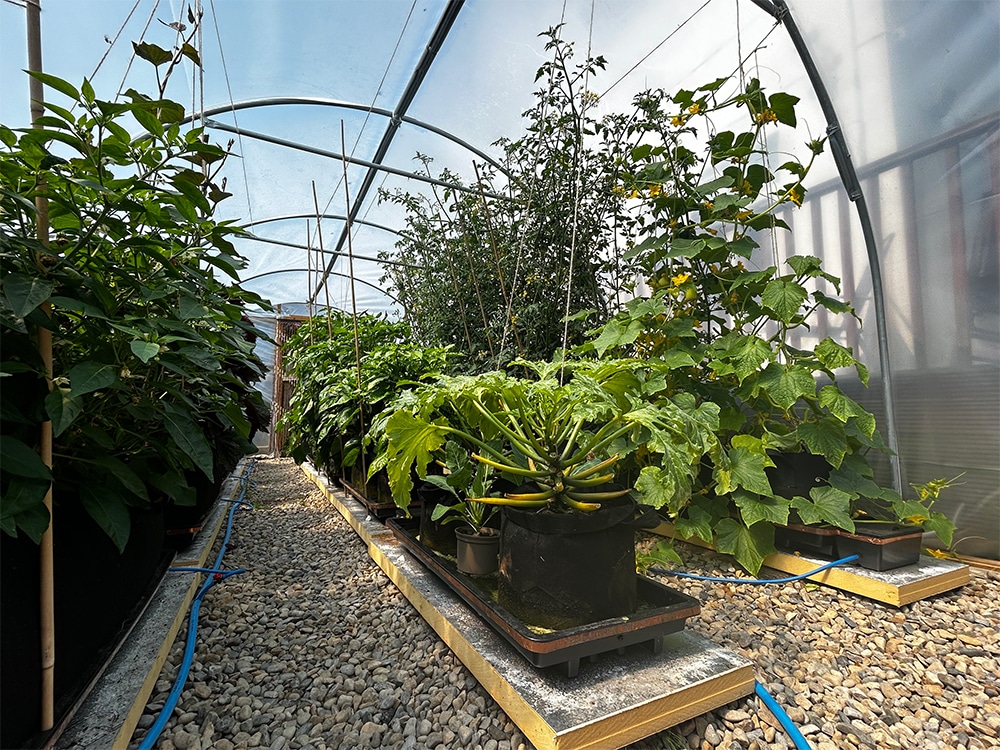
Growing your own food is pretty much the definition of independence, a special kind of independence that takes more than one form. Sure, it means you’re not reliant on purchased goods of questionable quality, value, and benefit. But (without wanting to get too flighty) the actual process of producing your own supply of fruit and veg is, in itself, really liberating. Growing reassures you that anything is possible and that you are capable.
So, what can freedom-seeking individuals do if all traditional forms of horticulture are physically beyond them? Traditional in-earth growing is highly dependent on lifting, carrying, and bending. Even when you switch up to container-based growing the exertion can be too much for those with mobility issues. Okay, you may be able to get some help setting up and harvesting. But there’s one essential daily task that you need to attend to – watering.
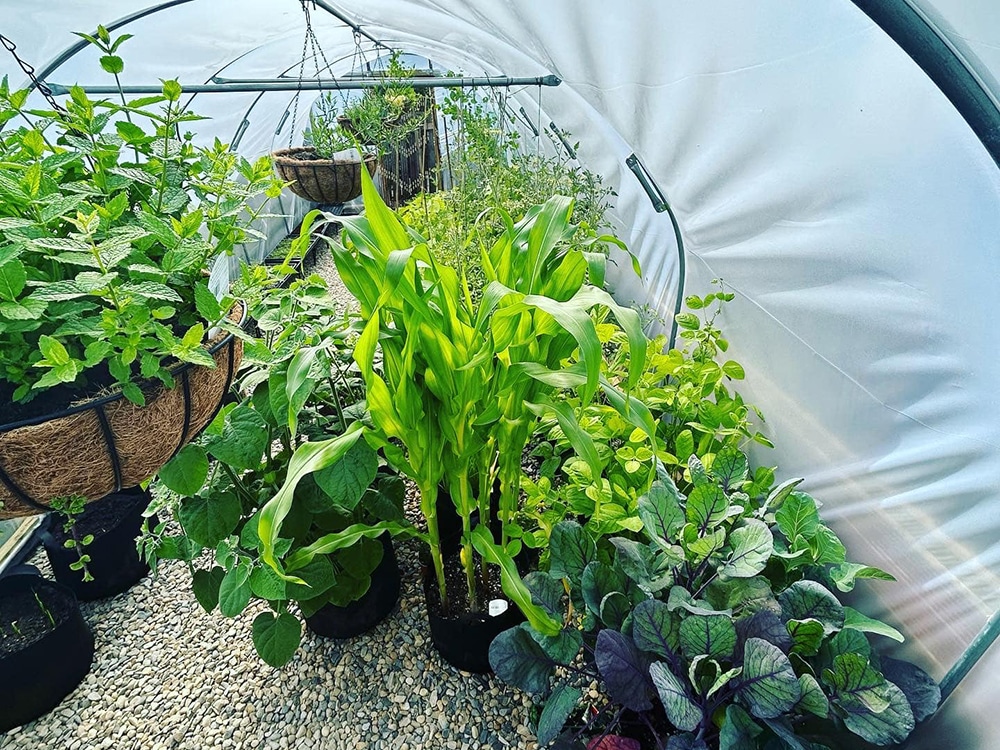
Gavin Saul is a keen grower. He’s also a disabled Veteran with spinal issues. A couple of years ago he took the decision to get big into growing his own fruit and veg. ‘I got a poly tunnel in spring 2023…which turned out to be a bit bigger than I expected, haha! I just made a gravel floor in it to use containers to grow food in. That first season was super hard going for me.’
The problem was that daily grind of watering the plants. ‘I was growing in big fabric pots. The plants loved it…but I was having to water every day, sometimes twice a day in the summer. I really couldn’t manage it and then had to get family to help. I hated that loss of independence.’
At that point Gavin started to research automatic watering systems, and found AutoPot. ‘I ordered 15 Tray2Grows and all the bits and bobs to set them up in the poly.’ The layout he created was testament to the imagination of our growers, the inspiration our systems can spark, and the flexibility of AutoPot in use.

‘I created 3 rows of 5 trays in there and grew. And GREW. Well, it quickly became apparent that my design was so good it was going to be an issue! My entire 10m x 3m poly was literally FULL of plant and I really struggled to get in to maintain and harvest.’
‘I had to get my wife and kids to do it again. A victim of my own success haha. But the trays had been massively successful and my harvests were amazing!’
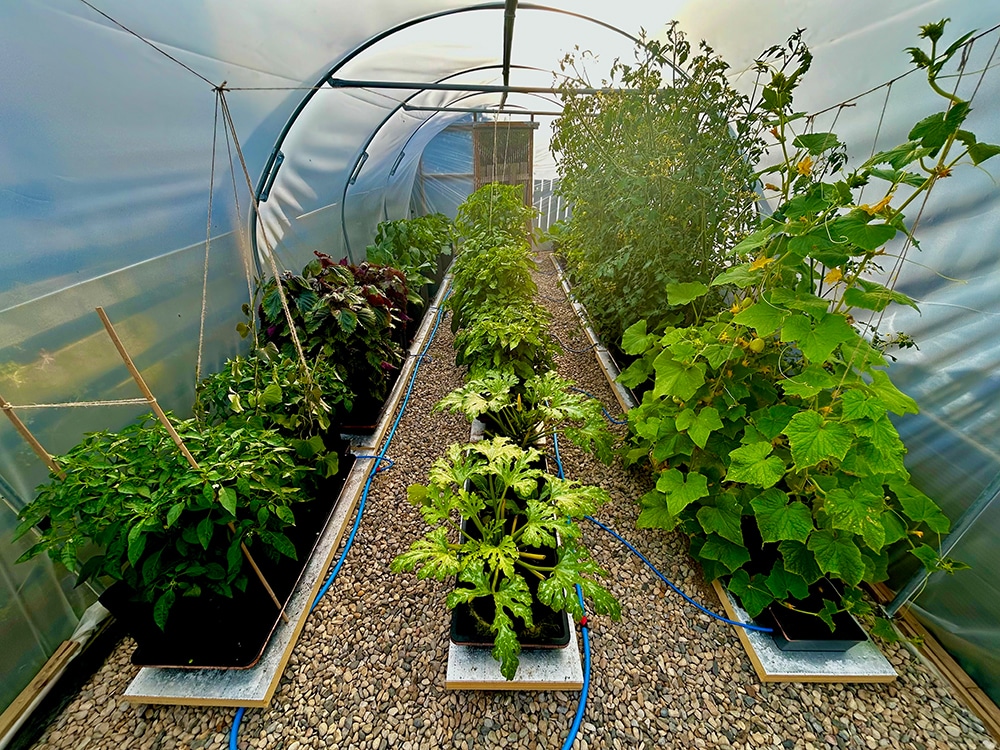
Plant spacing is a recurrent theme with first-time AutoPot users. The excitement of maximising your floorspace is immense. But it’s important to leave some room to allow for access, airflow, and plant growth. Still, it’s no big thing, a little spatial tweaking was all that was required for the next season.
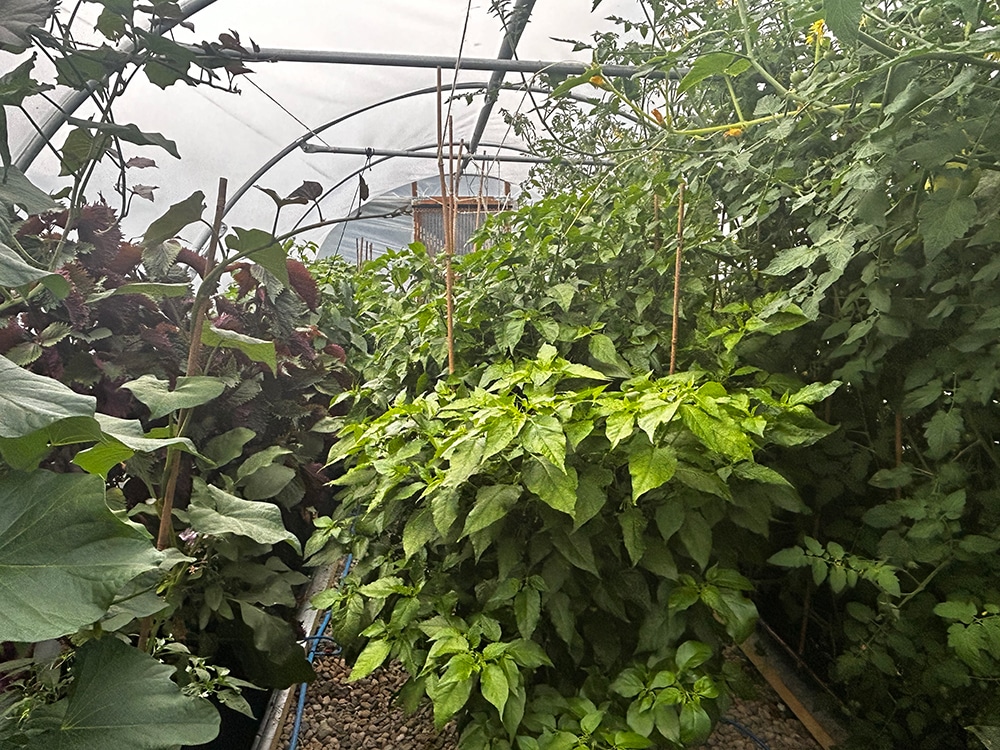
‘I’ve been pondering a new design throughout winter ‘24 as I really want to have the poly tunnel producing all year round. The new design promises to use the trays in much a better way. With 13 trays around the edges of the tunnel on level platforms made of stakes and insulation boards, and a big gap down the middle to make access easy. Hopefully this year I can just run it myself.’
There’ll certainly be plenty of variety when it comes to Gavin’s year-round crops. Because the Tray2Grows allow him to use so many different growing techniques he can produce practically anything.
The units can be set up with fabric planters for root veg, grow bags for vine crops, and pots of any size for a diverse selection of bushy, fruiting and flowering plants. Gavin can also add intensely flavoursome morsels to his meals by using specially designed trays to produce quick-to-harvest herbs and micro herbs. Finally or rather ‘firstly’, the Tray2Grow units can also be used to propagate, helping to keep the whole operation self-contained and maximising the use of space.
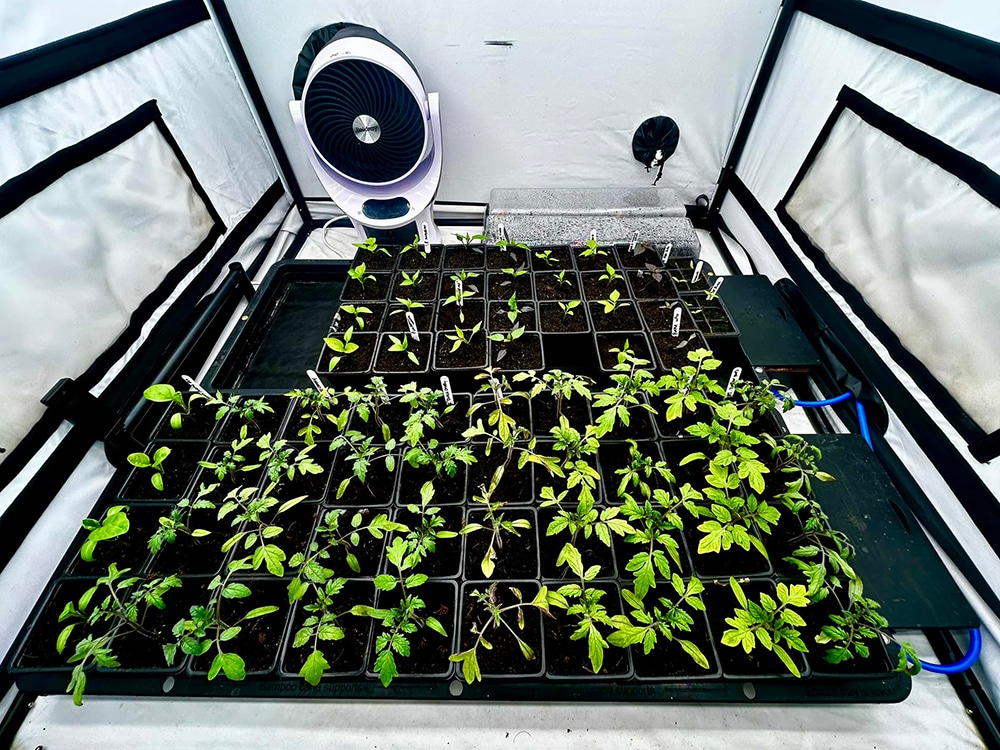
Gavin’s choice of varieties is based on a combination of table faves and curiosity. Previous Tray2Grow-raised crops have included pak choi, lettuce, kale, carrots, daikon radish, oasis turnip, sweet potatoes, cucumbers, and mustard greens. This year his poly will also feature tomatoes, eggplants, chillies, bell peppers, and salads. There’s no way you’re not getting a meal out of that lot!
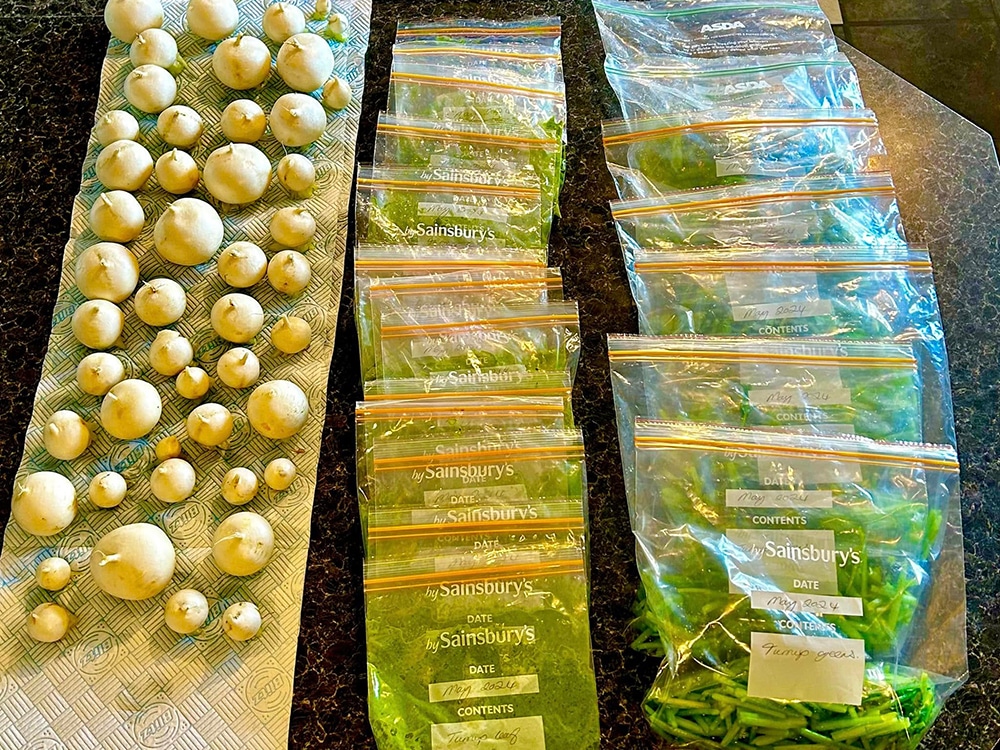
The grow bag configurations are being rested in favour of more pot-based growing – initially at least. Packed with potential, the fabric pots that Gavin favours are capable of bringing bigger plants along much faster in smaller containers. This is made possible by the porous pot sides that allow for increased oxygen exchange in the grow media – supercharging growth.
Fabric pots also offer ‘air-pruning’. When the plant roots reach the sides of the pots they’re stopped in their tracks by the colder air outside. Deterred from running into the pot sides and chasing around and around (as in plastic pots) the rhizosphere develops into an immense, nebulous, intricately branched structure that is brilliant at taking up nutrients and moisture.
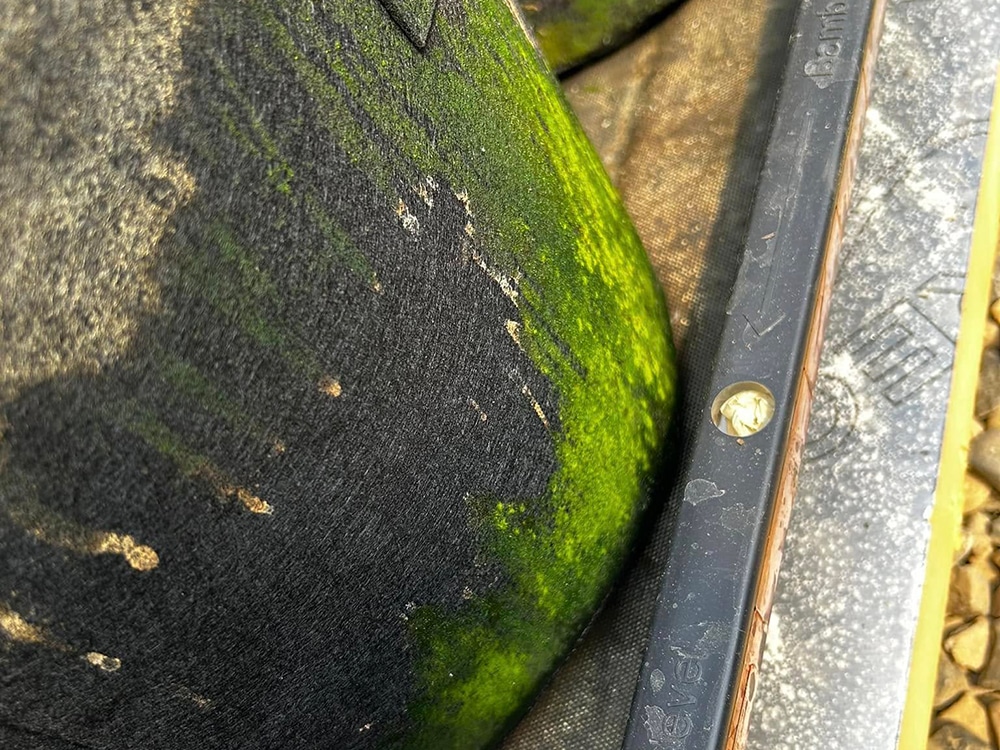
One unsightly reality of growing in fabric is the algae that can occur on pot sides. This, however, has zero negative effect on the plants themselves and is easily removed in-season or washed off completely in an in-between-grows trip to Mr Washing Machine. It should be noted that Mrs Tumble Dryer should at all times remain off-limits to your fabric pots.
Everything is potted in a nice, fluffy, free-drying grow media, providing rootzone with excellent drainage. Initially it’s okay to simply supply plain water via the reservoir and pipework. A week or so in you can supplement this plain water supply with your nutrient of choice. Again, the fertiliser is introduced via the system – drastically reducing the labour required to keep the plants thriving.
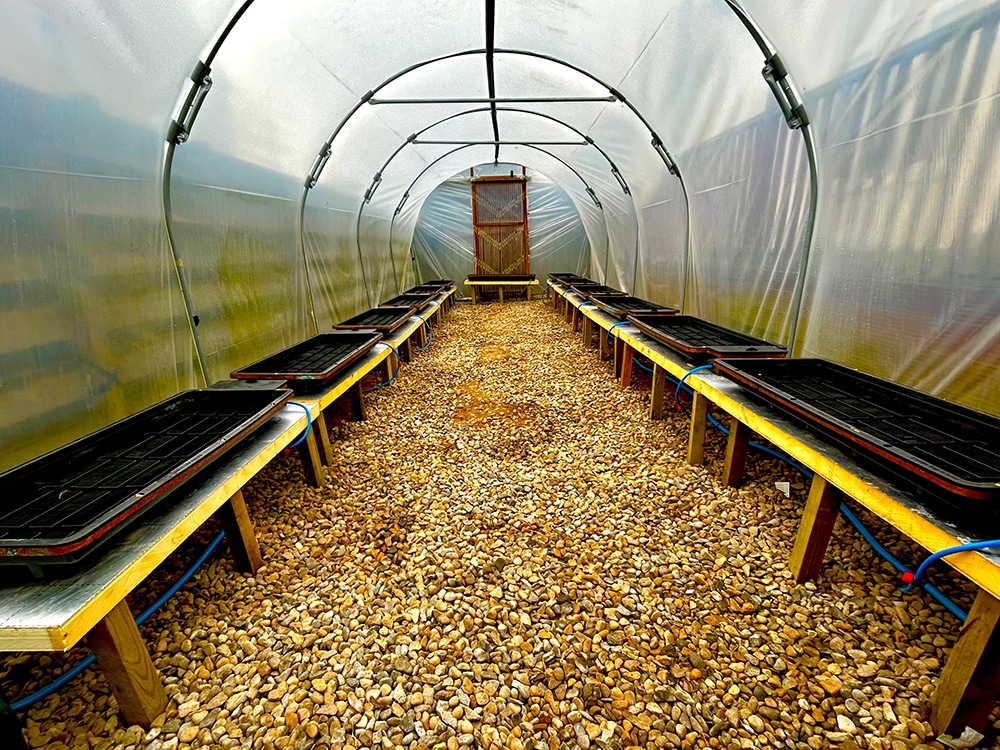
Best of all, this automation comes at no additional cost in terms of utilities. As Tray2Grow requires no mains water, is zero-waste, and doesn’t use electricity at all, Gavin can enjoy labour-free gardening affordably.
We very much look forward to following Gavin’s progress through this season and indeed, as he’s planning year-round harvest, beyond!
